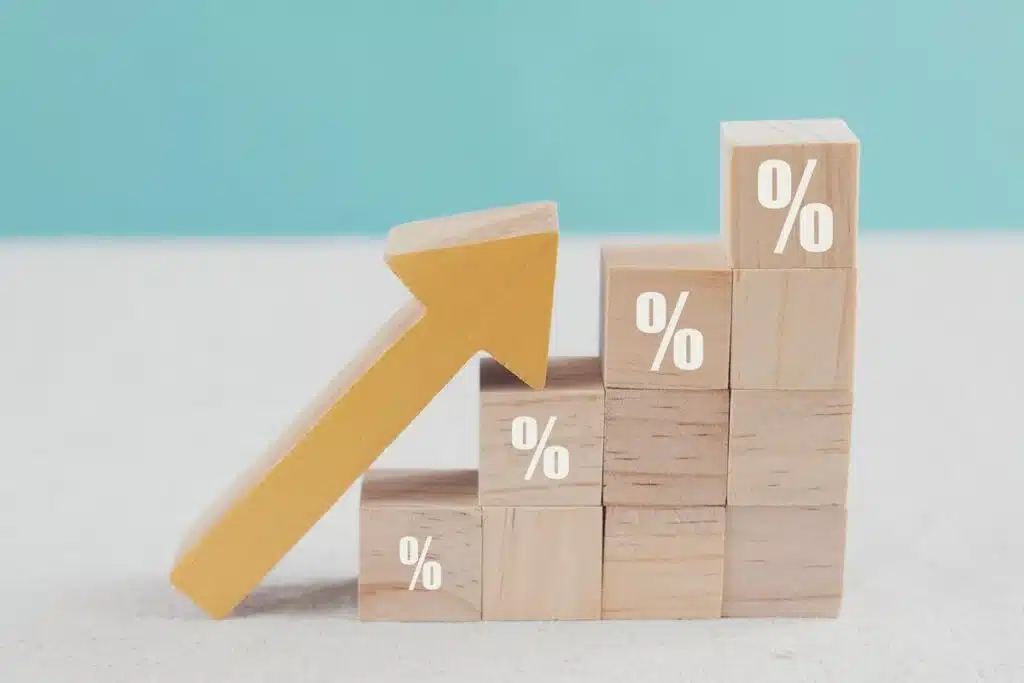💰 The Power of Compound Interest: Turning Small Investments Into Big Gains

Often dubbed the "eighth wonder of the world" by Albert Einstein, compound interest is arguably the single most important concept for anyone looking to build serious long-term wealth. It is the engine that transforms modest, consistent investments into a substantial fortune over time. While the idea is simple, its exponential effect is what separates savvy investors from the rest.
At its core, compounding is the process of earning a return not only on your initial investment (the principal) but also on the accumulated returns from previous periods—it is, quite literally, "interest on interest." This mechanism creates a powerful, self-reinforcing loop of growth, where your money begins to work for you, and your earnings start generating their own earnings.
Understanding the Mechanics: Compound vs. Simple Interest
To fully appreciate compounding, it’s helpful to contrast it with simple interest.
In a simple interest scenario, interest is calculated solely on the original principal amount. For example, if you invest $1,000 at a 5% annual simple interest rate for 10 years, you'll earn $50 every year, totaling $500 in interest ($1,000 * 0.05 * 10). Your final balance would be $1,500.
With compound interest, the story is dramatically different. Using the same $1,000 investment at a 5% annual rate:
- Year 1: You earn $50 in interest. Your new balance is $1,050.
- Year 2: The 5% interest is now calculated on $1,050. You earn $52.50. Your new balance is $1,102.50.
- Year 3: Interest is calculated on $1,102.50, and so on.
Over 10 years, the compounded investment would grow to approximately $1,628.89. The difference—nearly $130—might seem minor in the early stages, but extend that timeline to 30 or 40 years, and the gap becomes astronomical. This phenomenon is often visualized as a snowball rolling down a hill: it starts small, but with every rotation, it picks up more snow, accelerating its size and momentum.
The mathematical formula that governs this growth is:
$$A = P(1 + \frac{r}{n})^{nt}$$
Where:
- $A$ = Final amount
- $P$ = Principal investment amount
- $r$ = Annual interest rate (as a decimal)
- $n$ = Number of times that interest is compounded per year
- $t$ = Time in years
The Two Pillars of Compounding: Time and Consistency
Harnessing the full potential of compound interest rests on two crucial, controllable factors: time and consistency.
1. Time is Your Greatest Asset ⏳
In the compounding equation, the exponent ($nt$) represents the total number of compounding periods. Because this variable is in the exponent, its increase has an exponential effect on the final amount. The most critical lesson in compounding is to start early.
Consider two investors, both aiming for retirement at age 65, both earning a hypothetical 8% annual return:
- Investor A starts at age 25, investing $500 per month for 10 years, and then stops. They contribute a total of $60,000.
- Investor B waits until age 35 to start, investing the same $500 per month for 30 years (until age 65). They contribute a total of $180,000.
Despite contributing three times more money, Investor B will have a significantly smaller portfolio than Investor A, whose initial contributions benefited from an extra decade of compounding growth. Investor A’s earlier investments had 40 years to grow, whereas Investor B’s only had 30. The decade of early compounding far outweighs the triple contribution amount later in life.
2. Consistency Fuels the Engine ⚙️
Compounding requires that you leave your earnings invested so they can generate their own returns. Therefore, consistency in reinvesting returns is non-negotiable.
- Reinvest Dividends: If you own stocks or mutual funds that pay dividends, enroll in a Dividend Reinvestment Plan (DRIP). Instead of taking the cash payout, the dividends are automatically used to buy more shares, increasing your principal and further accelerating compounding.
- Regular Contributions: The strategy of Dollar-Cost Averaging (DCA)—investing a fixed amount of money at regular intervals—is a simple yet powerful way to remain consistent. This approach ensures you don't try to "time the market," reduces the impact of volatility, and maximizes the number of shares you purchase over time.
Strategies to Maximize Compounding’s Impact
While time and consistency are fundamental, a few other strategic choices can amplify the power of compounding.
1. Seek a Higher Rate of Return ($r$) 📈
Logically, a higher rate of return will accelerate compounding. However, higher returns often come with higher risk. The key is to find a balance appropriate for your risk tolerance and investment timeline. Over long periods, assets like diversified stock index funds (which track the performance of the overall market) have historically offered a higher rate of return than low-yield savings accounts or bonds, making them ideal vehicles for compounding.
2. Beware of Fees and Taxes 📉
Fees and taxes act as a perpetual headwind against compounding. Even a seemingly small 1% annual management fee on a mutual fund can erode tens of thousands of dollars from your portfolio over a few decades. Prioritize low-cost investment vehicles, such as Exchange-Traded Funds (ETFs) or index funds. Furthermore, utilize tax-advantaged accounts (like 401(k)s, IRAs, or TFSAs, depending on your jurisdiction) where investments grow tax-deferred or tax-free, allowing the full sum to compound without annual deductions.
3. Know the Rule of 72 🧠
A handy mental shortcut for investors is the Rule of 72. It’s used to estimate how long it will take for an investment to double in value. You simply divide the number 72 by the annual rate of return.
- Example: If your investment earns an average of 8% annually, $72 / 8 = 9$. It will take approximately 9 years for your money to double.
- Example: If you earn 4% annually, $72 / 4 = 18$. It takes twice as long (18 years) to double the investment.
This rule clearly illustrates the vital connection between the rate of return and the time required for significant growth.
Conclusion: The Accessible Path to Wealth
The true genius of compound interest lies in its accessibility. You don’t need a massive initial capital outlay or insider knowledge to benefit. The most powerful tool is simply the decision to start investing now, no matter how small the amount, and maintain that discipline over a long period.
By starting early, consistently reinvesting your earnings, minimizing costs, and choosing appropriate, long-term assets, you turn modest, small investments into a financial trajectory that would be impossible to achieve through mere saving. Compound interest truly is the foundation upon which nearly all significant personal wealth is built.

Related